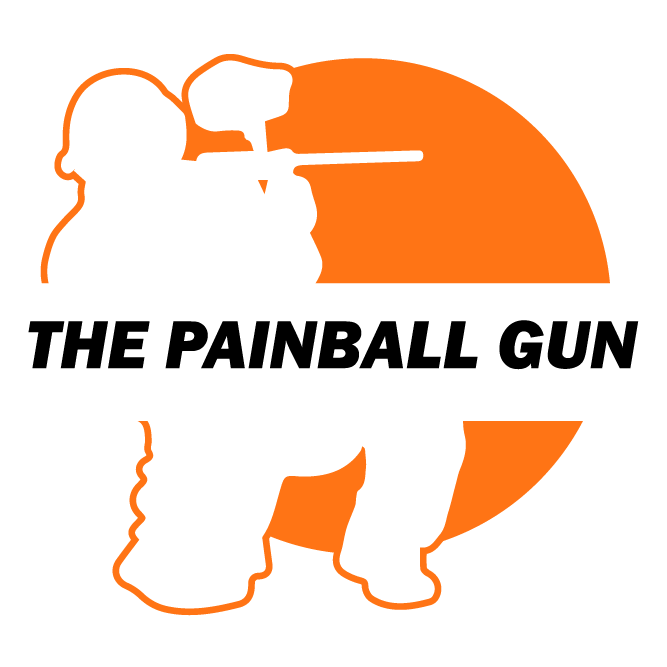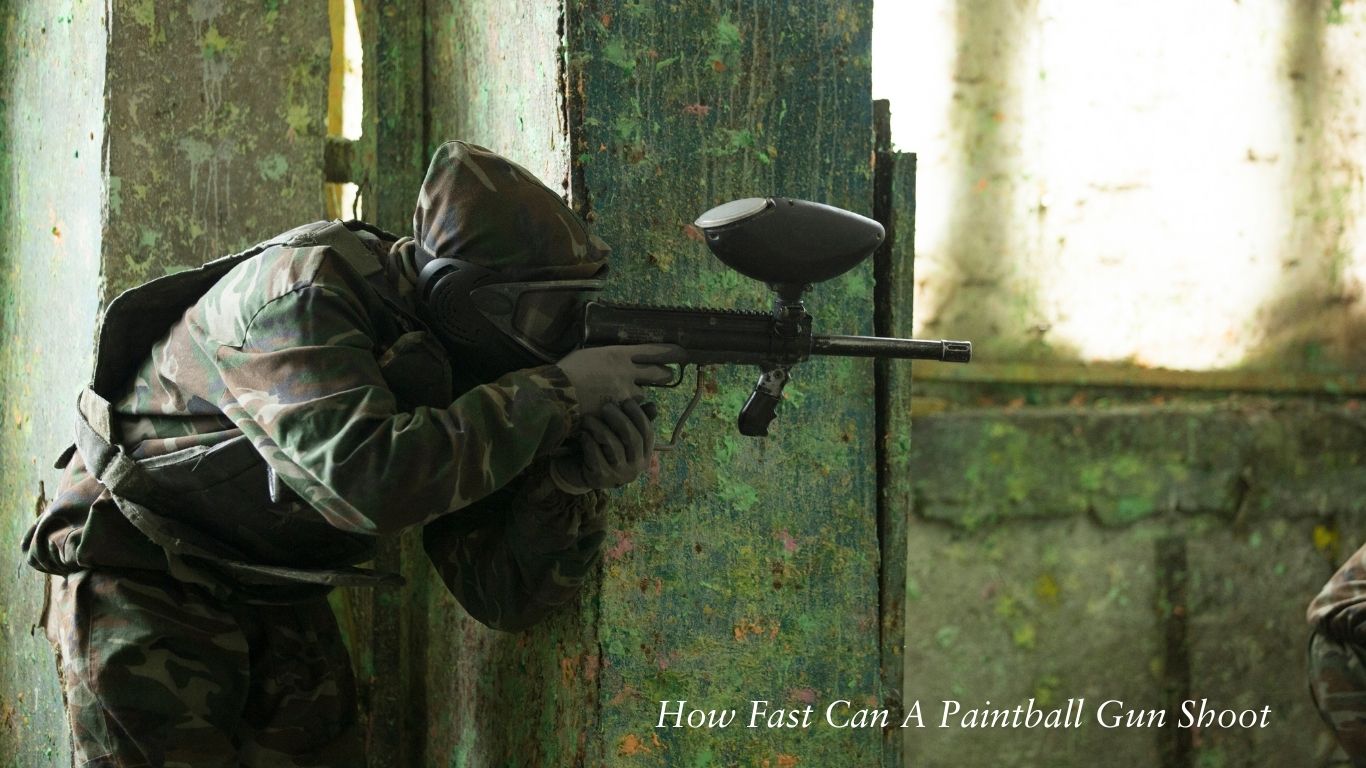One of the most common questions players have when stepping onto the paintball field is: How fast can a paintball gun shoot? Whether you’re a beginner or a seasoned player, understanding the speed at which your paintball marker shoots can significantly impact both your game strategy and safety. In this comprehensive guide, we’ll explore the factors that affect paintball gun velocity, how speed influences gameplay, and why understanding these dynamics is crucial for a better playing experience. From the basic mechanics of how paintball guns operate to the legal FPS (feet per second) limits on the field, everything you need to know is right here.
How Fast Can a Paintball Gun Shoot? Demystifying the Speed Factor
To answer the question of how fast a paintball gun can shoot, we need to first understand that paintball velocity is not a simple number. Paintball guns can shoot anywhere from 150 FPS to 300 FPS, depending on a variety of factors such as gun type, air source, and internal settings. However, the most commonly accepted FPS limit on paintball fields is 280 FPS—a number that ensures both safety and performance.
In the simplest terms, FPS measures the speed at which a paintball exits the barrel of your gun. A higher FPS means the paintball will travel faster and cover more distance, but it also introduces potential risks, such as increased chances of injury. This is why fields place strict regulations on FPS to maintain a safe playing environment.
The Science Behind Paintball Velocity
When you pull the trigger of your paintball gun, you’re releasing compressed air or gas that propels the paintball out of the barrel. This release of gas provides the necessary force to send the paintball hurtling toward your target. The higher the pressure behind the paintball, the faster it will travel. However, several components in your paintball marker can affect how fast the ball leaves the barrel.
For instance, mechanical guns typically shoot at slower speeds compared to electronic guns because the mechanisms inside the gun aren’t as efficient at releasing air quickly. Electronic markers are equipped with faster firing systems that can shoot at higher velocities with more consistency. This difference is one of the reasons why high-end tournament players often opt for electronic markers, as they offer more control over the speed and accuracy of their shots.
The Key Variables That Affect Paintball Gun Speed
While the speed of your paintball gun is essential for game strategy, it’s important to remember that various factors influence how fast your shots will be. The type of gun, air source, barrel length, and even the environmental conditions can all play a role in how fast the paintball will travel.
Gun Type: Mechanical vs. Electronic
As mentioned earlier, the type of paintball gun you use has a significant effect on its shooting speed. Mechanical markers tend to shoot slower because they rely on mechanical parts to cycle and fire the paintball. These guns are more reliable in certain conditions, but they usually don’t offer the speed that electronic markers can provide.
On the other hand, electronic markers are powered by batteries and use electronic systems to control the release of air. These guns are generally faster, more efficient, and provide better consistency in shooting speed. They allow for rapid adjustments and can shoot at high velocities without compromising accuracy.
Air Source: CO2 vs. Compressed Air
The air source used in a paintball gun also influences its speed. Guns that use CO2 (carbon dioxide) are cheaper and widely available, but CO2 can cause fluctuations in pressure, which may result in inconsistent shooting speeds. Compressed air (HPA) provides a more consistent pressure, ensuring that the velocity remains stable throughout the game. Players who are serious about their performance typically use HPA systems to ensure their paintball guns shoot at a consistent and higher FPS.
Barrel Length and Paintball Quality
The length of the barrel also has an impact on the speed of the paintball. A longer barrel gives the paintball more time to accelerate, but it can also create more friction, which may reduce its velocity. Conversely, a shorter barrel allows for faster release, but this may affect accuracy. The ideal barrel length depends on the type of play and personal preference, with tournament players typically opting for shorter barrels to maintain speed and maneuverability.
The quality of the paintballs you use can also significantly influence your gun’s performance. Poor-quality paintballs that don’t fit well in your barrel can cause jams or break before exiting the barrel, which not only decreases the shooting speed but can also ruin your game. High-quality, properly sized paintballs ensure a smooth, fast shot with fewer interruptions.
The Legal Limits of Paintball Gun Speed
Now that we’ve established the factors that affect paintball velocity, let’s discuss the FPS limits enforced by most paintball fields. FPS regulations are essential to ensure that players don’t cause unnecessary injuries due to high-speed paintballs.
Why Are FPS Limits Important?
The reason for FPS limits is simple: safety. Paintballs fired at excessive speeds can cause severe bruising or even more serious injuries. FPS regulations help prevent these injuries by ensuring that the paintballs maintain a safe speed, even during intense gameplay. The most common limit is 280 FPS, but some fields may impose stricter regulations based on local safety standards or the type of game being played.
Exceeding the FPS limit can result in penalties or disqualification from the game. Many fields will check the FPS of players’ guns before they start playing and may make adjustments if necessary. If you’re using an electronic marker, you’ll have the ability to adjust the velocity settings, but make sure you’re complying with the field’s regulations.
How Fast Should a Paintball Gun Shoot for Optimal Gameplay?
While speed is important in paintball, it’s crucial to remember that higher FPS doesn’t always equate to better performance. In fact, optimal gameplay relies on a balance of speed, accuracy, and control.
Finding the Sweet Spot
While shooting faster may seem advantageous, it can actually backfire if it compromises accuracy. A paintball traveling at excessive speed might lose its trajectory or even break before reaching its target. This is why most fields regulate the FPS to ensure consistency and safety.
Players typically find the sweet spot between 260 FPS to 280 FPS for optimal gameplay. This range allows for enough speed to hit opponents from a distance while maintaining accuracy and minimizing the risk of injury.
FAQs
Q: What is the maximum FPS allowed at paintball fields?
A: The maximum FPS allowed at most fields is 280 FPS, although some fields may have stricter limits depending on the game type and location.
Q: How can I increase the shooting speed of my paintball gun?
A: To increase your gun’s shooting speed, consider upgrading to an electronic marker, using compressed air for a more consistent pressure source, and experimenting with barrel length and paintball quality.
Q: Can a faster paintball gun cause injury?
A: Yes, paintballs fired at excessive speeds can cause more severe injuries. This is why FPS limits are enforced in paintball fields to ensure the safety of all players.
Q: What is the best barrel length for speed?
A: Shorter barrels generally provide faster shots, but they may sacrifice accuracy. It’s essential to find the right balance between speed and control based on your playing style.
Q: Why do some paintballs break during high-speed shots?
A: High-speed shots put more stress on paintballs, increasing the chance they will break in the barrel or mid-air. Using high-quality, well-fitting paintballs can help reduce this issue.
Conclusion
To sum it up, the speed of your paintball gun plays a critical role in your gameplay experience. By understanding the factors that affect paintball velocity—from the type of gun to the air pressure system and even environmental factors—you can adjust your gear for the best possible performance. At the same time, adhering to field regulations and ensuring you stay within FPS limits is key to ensuring a safe, fair, and enjoyable game for everyone. Ultimately, your focus should be on finding the right balance between speed and accuracy. By maintaining a proper velocity and adjusting your settings accordingly, you can elevate your performance on the field while keeping your safety and the safety of others in mind.


Leave a Reply